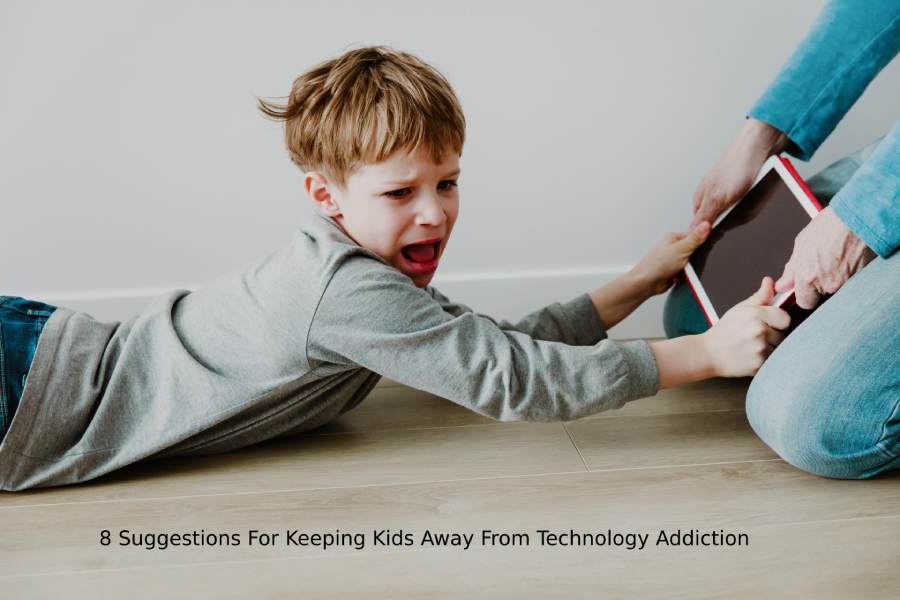8 Suggestions For Keeping Kids Away From Technology Addiction

8 Suggestions For Keeping Kids Away From Technology Addiction
Children today are familiar with smartphones, computers, and tablets nearly from birth. Parents, paediatricians, and psychologists who address the potential drawbacks of excessive usage of these devices are concerned about this development. How can we safeguard our kids in the culture of today? We have found 8 suggestions for keeping kids away from technology addiction constructive ways.
Table of Contents
Decide how long your youngster can use electronics at a time.
Depending on a child’s age, different amounts of time should be allowed for screen usage. The American Academy of Pediatrics, a recognised authority on the subject, suggests the following:
No television or other electronic gadgets should be used from birth to 18 months. The only exclusions would be video chats with other family members and the cherished, distant granny.
- For children aged 2 to 5, the maximum time spent in front of electronics is 1 hour. All technological devices, including smartphones, TVs, tablets, and computers, are acceptable during this time.
- A maximum time limit for using digital devices should be established for children older than 6 years old. (most professionals agree with a maximum of 2 hours per day).
- Additionally, it’s crucial to ensure that electronic devices will not interfere with the child’s time spent sleeping, exercising, and performing other duties essential for their health and proper growth.
Don’t prohibit: Provide substitutes.
It will most likely end in a tantrum if the tablet, smartphone, tablet, or laptop is taken away and you tell the child to “go do something else.” Depending on the child’s age and interests, providing an alternative, a fun shared activity, such as playing sports, going for a day in the country, reading, painting, or fishing, is vital.
Show by example
Children copy the actions of their parents. For instance, when the mother enjoys reading, the likelihood that the child will as well is far higher than mothers who are constantly on their phones.
Reevaluate your connection with technology. How long have you been investing in them? How frequently do you check the news, social media, or mailbox? Do you allow yourself unrestricted access to the Internet and electronic devices?
Be your child’s go-between and mentor for communicating with the online world.
Make it clear to your kid that the Internet and other digital tools may be used as sources of knowledge and information and for entertainment. Support your child’s curiosity and exploration. Conversely, you must be ready to reply and offer your insights.
Pay close attention to the level of the kid’s content consumption.
Children under nine must always be accompanied by an adult when using the Internet. After that age, parents can utilise parental monitoring applications like FamilyTime, which offer robust parental controls and enable parents to keep a close eye on their children’s digital activities. With the app’s help, parents can watch the websites their children visit and their time there. With this software, parents may prioritise learning resources, including apps and websites that train children’s attention spans, communication abilities, and curiosity in learning new things. The online filtering function of the FamilyTime app is another perk that enables parents to block inappropriate information on children’s devices. Give this software a free trial right away to see how it functions. You can download the app’s trial edition from your phone’s app store.
Make Internet and electronic-free zones
Set boundaries for when and where the Internet and digital gadgets should be used, such as the bedroom and kitchen, mealtimes with family and friends and outdoor excursions. Make it plain that the child cannot bring a tablet or phone to the bedroom or dining table, and avoid installing computers in the child’s room.
According to paediatricians, parents should refrain from letting their children use digital devices for at least an hour before bed.
Educate the youngster on the fundamentals of social media engagement so that they can avoid making any blunders.
It is best to steer children under 12 away from social media. Access to these resources is much more crucial for teenagers beyond that age because they are now in the phase of self-discovery, perception of others, and peer approval seeking.
Parents must be present at this time in their children’s lives so they can teach them the fundamentals of social media participation. However, it is best to avoid adding kids to your friends list. Most importantly, remember that your child has the right to privacy and refrain from posting remarks on the timeline or images of minors.
Explain the dangers
Teenagers should be warned about potential dangers on the Internet at this age when they can browse without adult supervision. Try to explain everything about these risks to them and assist them in developing a plan to keep themselves safe.
Also Read: How AI is Changing Talent Acquisition in HR







